I'm interested in playing with a curve tracer for Mosfet matching.
Found an interesting article from Circuit Cellar for a simple front end for an oscilloscope. Create Your Own I-V Curve Tracer | Circuit Cellar
Has anyone else built something like this and could recommend an approach?
Thank you!
Found an interesting article from Circuit Cellar for a simple front end for an oscilloscope. Create Your Own I-V Curve Tracer | Circuit Cellar
Has anyone else built something like this and could recommend an approach?
Thank you!
You may want to look at this little vidio keeping in mind it's aimed towards testing SIT's and SIT's usualy are full on and require a -V on the gate to turn them off so I asume to check a regular n chanel mosfet you would invert the gate voltage supply.
Frankentracer: $20 SIT Curve Tracer Part One | AudioMaker
Frankentracer: $20 SIT Curve Tracer Part One | AudioMaker
Take a look at my DIY approach to curve tracing:
GitHub - mbrennwa/PyPSUcurvetrace: Python program for I-V curve tracing of electronic parts using programmable power supplies (scroll down to see some examples)
Idea for power transistor curve tracer -- good or not? (again, there are some examples scattered throughout the thread)
GitHub - mbrennwa/PyPSUcurvetrace: Python program for I-V curve tracing of electronic parts using programmable power supplies (scroll down to see some examples)
Idea for power transistor curve tracer -- good or not? (again, there are some examples scattered throughout the thread)
Take a look at my DIY approach to curve tracing:
GitHub - mbrennwa/PyPSUcurvetrace: Python program for I-V curve tracing of electronic parts using programmable power supplies (scroll down to see some examples)
Idea for power transistor curve tracer -- good or not? (again, there are some examples scattered throughout the thread)
Very nice and nicely documented!
Just found this ready made device from Digikey for $126 usd.
Link to Digikey: DCA 75 Curve Tracer
Anyone with experience with this unit? Looks compelling, especially given the price.
Link to Digikey: DCA 75 Curve Tracer
Anyone with experience with this unit? Looks compelling, especially given the price.
An externally hosted image should be here but it was not working when we last tested it.
Here's a link to the MCA 75 User Guide:https://www.peakelec.co.uk/downloads/dca-pro-user-guide-en.pdf
Currently, there are some tracer available that covers lower Volt/Current range.
I think that what DIYers are looking for is a stand-alone tracer with USB connection to PC and software for tracer is a must.
Present Available Tracers:
DCA pro: USB-powered, USB port, PC software, low V/I range ~12V/10mA
LockyZ tracer: External power, USB port, PC software, mid V/I range ~35V/3A
Franken tracer: requires Oscilloscope, no PC sofware, ONLY for SIT.
PyPSUcurve tracer: requires multiple PSU, Python-based software, ~60V/10A
I own DCA pro and LockyZ 2019 both. I love the DCA pro for measuring small to mid transistor, but low
Current output is a huge limitation.
For LockyZ 2019 tracer, it is great for small to mid-high transistor, and its PC software is powerfull for
Data analyzing, but the software is old and has poor user interface, English translation. Basically it is identical to 2013's version, with just some minor modification, according to LockyZ himself.
About the PyPSU, yes its output is very powerfull, but you need to buy two heavy PSU. Also, the communication between PC and PSU, the python command, is not that friendly to common users who
Have no python knowledge probably.
I know PyPSU is a developing project, so maybe there will be a easy-to-use .exe software. But right now,
It means you have to buy 2 heavy and a bit costly PSU to buid up the system, and install python plus plugins, type command codes line by line to get the graph. Kind of hard work.
So, if a new tracer/matching system is developing, I would suggest:
1. Stand-alone PC Software, powerfull, friendly UI, perhaps open-sourced code
2. USB communication, plug-and-use
3. Integrated hardware, best to have DAC/ADC/PSU in one PCB or box
4. Compaitible with comon transistors, MOSFET, JFET, SIT, BJT….
Able to measure small to power transistors, ~60V/10A is good for most audio application.
I think that what DIYers are looking for is a stand-alone tracer with USB connection to PC and software for tracer is a must.
Present Available Tracers:
DCA pro: USB-powered, USB port, PC software, low V/I range ~12V/10mA
LockyZ tracer: External power, USB port, PC software, mid V/I range ~35V/3A
Franken tracer: requires Oscilloscope, no PC sofware, ONLY for SIT.
PyPSUcurve tracer: requires multiple PSU, Python-based software, ~60V/10A
I own DCA pro and LockyZ 2019 both. I love the DCA pro for measuring small to mid transistor, but low
Current output is a huge limitation.
For LockyZ 2019 tracer, it is great for small to mid-high transistor, and its PC software is powerfull for
Data analyzing, but the software is old and has poor user interface, English translation. Basically it is identical to 2013's version, with just some minor modification, according to LockyZ himself.
About the PyPSU, yes its output is very powerfull, but you need to buy two heavy PSU. Also, the communication between PC and PSU, the python command, is not that friendly to common users who
Have no python knowledge probably.
I know PyPSU is a developing project, so maybe there will be a easy-to-use .exe software. But right now,
It means you have to buy 2 heavy and a bit costly PSU to buid up the system, and install python plus plugins, type command codes line by line to get the graph. Kind of hard work.
So, if a new tracer/matching system is developing, I would suggest:
1. Stand-alone PC Software, powerfull, friendly UI, perhaps open-sourced code
2. USB communication, plug-and-use
3. Integrated hardware, best to have DAC/ADC/PSU in one PCB or box
4. Compaitible with comon transistors, MOSFET, JFET, SIT, BJT….
Able to measure small to power transistors, ~60V/10A is good for most audio application.
to AmpsRus #10
Hello AmpsRus,
the Peak Atlas DCA75Pro is one of my most important tools to build amps.
If you want to match your active devices, the DCA75Pro is a very good thingie at an affordable price (I paid 123,50 € here in europe).
The range to measure is not so'wide' like a professional curve tracer. In my opinion more than enough for me as an hobbyist.
The DCA75Pro is delivered with a software that shows your results (curves) on your PC.
You can see some of my measurements / matching active devices in the `Waynes BAF2018 linestage'-thread.
Greets
Dirk
Hello AmpsRus,
the Peak Atlas DCA75Pro is one of my most important tools to build amps.
If you want to match your active devices, the DCA75Pro is a very good thingie at an affordable price (I paid 123,50 € here in europe).
The range to measure is not so'wide' like a professional curve tracer. In my opinion more than enough for me as an hobbyist.
The DCA75Pro is delivered with a software that shows your results (curves) on your PC.
You can see some of my measurements / matching active devices in the `Waynes BAF2018 linestage'-thread.
Greets
Dirk
to AmpsRus
some pics
Greets
Dirk
some pics
Greets
Dirk
Attachments
-
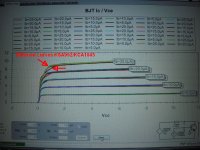 KSA992_KSC1842_matching2.jpg102.6 KB · Views: 620
KSA992_KSC1842_matching2.jpg102.6 KB · Views: 620 -
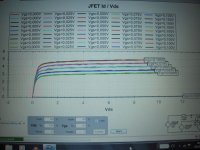 TOSHIBA_2SK209GR_8_matched_graph.jpg100.4 KB · Views: 582
TOSHIBA_2SK209GR_8_matched_graph.jpg100.4 KB · Views: 582 -
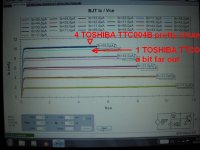 TOSHIBA_TTC_TTA004B_not matched_measurements.jpg93.5 KB · Views: 589
TOSHIBA_TTC_TTA004B_not matched_measurements.jpg93.5 KB · Views: 589 -
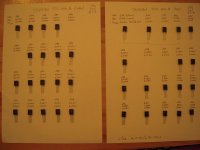 TOSHIBA_TTC_TTA004B_measurements.jpg79.2 KB · Views: 497
TOSHIBA_TTC_TTA004B_measurements.jpg79.2 KB · Views: 497 -
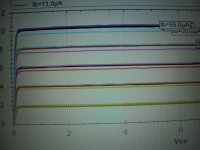 TOSHIBA_TTC_TTA004B_not matched_measurements_close_up.jpg102.3 KB · Views: 518
TOSHIBA_TTC_TTA004B_not matched_measurements_close_up.jpg102.3 KB · Views: 518
to AmpsRus
And a good article of Nelson Pass (with a recipe for a Mosfet-tester)....
404 Not Found
Greets
Dirk
And a good article of Nelson Pass (with a recipe for a Mosfet-tester)....
404 Not Found
Greets
Dirk
Franken tracer: ..no PC sofware, ONLY for SIT.
Are you sure ??
Frankentracer Excel Capture | AudioMaker
Frankentracer Part Two
I own DCA pro and LockyZ 2019 both. I love the DCA pro for measuring small to mid transistor, but low
Current output is a huge limitation.
Agreed. The next major problem for me is that the software is Windows only. I don't have / use Windows, so my DCA is sitting unused in my workshop. I asked the manufacturer for the software interface so that I could make my own software to talk to the DCA, but they didn't tell me anything.
For LockyZ 2019 tracer, it is great for small to mid-high transistor, and its PC software is powerfull for
Data analyzing, but the software is old and has poor user interface, English translation. Basically it is identical to 2013's version, with just some minor modification, according to LockyZ himself.
Again, the LockyZ tracer works with Windows software only. I couldn't figure out how to get in touch with LockyZ in order to ask him about the software interface of his board. My LockyZ board is sitting unused next to the DCA.
About the PyPSU, yes its output is very powerfull, but you need to buy two heavy PSU. Also, the communication between PC and PSU, the python command, is not that friendly to common users who
Have no python knowledge probably.
I know PyPSU is a developing project, so maybe there will be a easy-to-use .exe software. But right now,
It means you have to buy 2 heavy and a bit costly PSU to buid up the system, and install python plus plugins, type command codes line by line to get the graph. Kind of hard work.
Not really. All you have to do is to enter one command to run the program. You don't need to know anything about Python. Also, converting the Python code into an *.exe file would limit its use to Windoze again (this is exactly what happened with the eTracer software: it's beautiful Python program, but they only released it as an *.exe file. No thanks.). As it is, PyPSU runs on just about any computer platform that has Python available.
Also, the voltage / current limits really depend on the power supply units you use. For example, I have a 500 VDC PSU, which I use for tracing tubes with PyPSU. I don't remember what I payed for my LockyZ board (which came without the software and zero support from LockyZ), but a similar testing range 2 x 30V / 2 x 5A can be had with PyPSU with two RND/Korad 3005 PSUs (about 65 Euro each). If you don't have a Linux computer, add a Raspberry Pi (35 Euro). That's a total of 165 Euro for a powerful and very flexible curve tracer.
That said, it's not always a question of the voltage / current limits. Sometimes you're interested in the resolution of the data. A RND/Korad 3005 PSU will give you 10 mV / 1 mA resolution. A RND/Korad KWR103 costs a bit more, but will do 60 V / 10 A at 1 mV/1 mA resolution. Or you could spend a lot more for a Keithley 2280S with 60 V / 3 A at 0.1 mV / 0.1 mA. As always, it's just a question of what you need, and what you can afford.
So, if a new tracer/matching system is developing, I would suggest:
1. Stand-alone PC Software, powerfull, friendly UI, perhaps open-sourced code
2. USB communication, plug-and-use
3. Integrated hardware, best to have DAC/ADC/PSU in one PCB or box
4. Compaitible with comon transistors, MOSFET, JFET, SIT, BJT….
Able to measure small to power transistors, ~60V/10A is good for most audio application.
Thinking about this, it wouldn't be too difficult to set this up with PyPSU using a Raspberry Pi to make a standalone curve tracer. Hmmmm.
...a similar testing range 2 x 30V / 2 x 5A can be had with PyPSU with two RND/Korad 3005 PSUs (about 65 Euro each).
Whoops, I screwed that up! Before you buy a 3005 PSU, make sure to get the version with a USB/RS232 port. They cost a bit more than the version without the USB/RS232.
This also looks like an interesting candidate for a powerful but cost-effective programmable PSU: JOY-IT RD6006
- Home
- Amplifiers
- Pass Labs
- DIY Curve Tracer for Mosfet Matching
